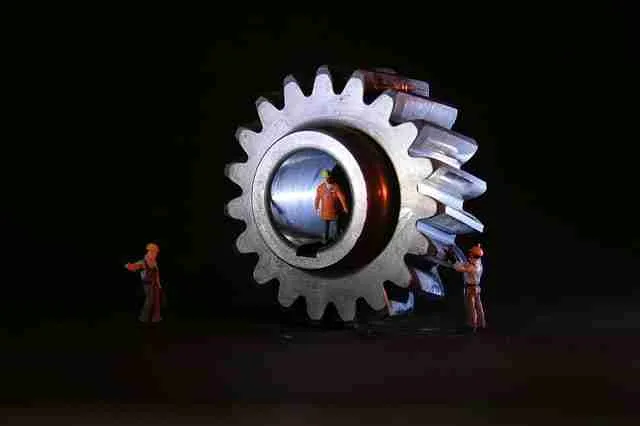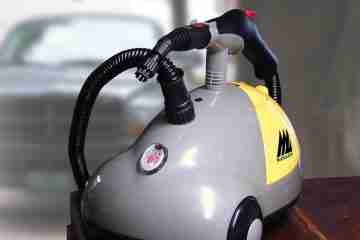What Would Make a Check Engine Light Go On

Our cars can do lots more than just making our rides comfy and faster. A car’s dashboard has many functions and features, most of which provide details about the car’s health. The orange engine-shaped icon on a car’s dashboard acts as the messenger, informing the driver everything happening under the hood. Read along to understand what would make a check engine light go on.
Known as the check engine light, when the orange engine-shaped icon goes on, it tells of a faulty engine, damaged oxygen sensor, faulty gas cap, or a damaged catalytic convertor. The lighting of the check light shouldn’t trigger unnecessary panic. However, it should not be ignored as it may signify a bigger and more costly problem.
What Would Make a Check Engine Light Go On – When You Should Act
The check engine light can light either steadily or sporadically. More than 90% of consumer reports ascertain that a blinking check engine light signifies a serious issue that needs immediate attention. So, when the check engine light is blinking, you may have to pull your car over and get a professional diagnostic check done.
Steady light doesn’t indicate any serious problem. It may not be a cause for an alarm. However, it shouldn’t be ignored either. Get a diagnostic check run on your vehicle to identify any potential or existing issues.
Damaged oxygen sensor
The oxygen sensor monitors the burning of fuel and provides details of any unburned oxygen. When the oxygen sensor cannot do its job as efficiently as required, it may trigger increased emissions besides lowering gas mileage. Modern cars have about 2 to 4 oxygen sensors, and for you to replace the right one, you should use the scanned code.
Oxygen sensors get damaged once they are clouded in oil ash, which can affect the efficiency at which fuel and oxygen mixture is changed. Don’t leave a faulty oxygen sensor unchanged as it will end up busting the catalytic converter. Changing an oxygen sensor is easy and affordable, as all it takes is to follow what’s outlined in the car’s user manual.
Damaged catalytic converter
Another reason the check engine light will go on is when the catalytic converter is damaged. Costing around $2000, the catalytic converter converts toxic gases and materials such as carbon monoxide into harmless compounds. A faulty catalytic converter lowers gas mileage, increases emissions, and makes your car slower.
The catalytic convertor gets damaged when other car components such as spark plugs and oxygen sensors are faulty. A damaged catalytic car converter can cause total car failure alongside making the gas mileage terrible. Replacing catalytic convertors isn’t cheap and can only be handled by a professional mechanic.
Faulty wires and spark plugs
A spark plug works to seal the car’s combustion chamber alongside providing an opening where the spark can move freely to activate engine combustion. Damaged plugs make the spark to backfire, which could make your car acceleration a bit jolty.
Spark plugs fail after they have exhausted their useful life. The useful life of a spark plug ranges from 25,000 to 100,000 miles. Replacing spark plugs isn’t a big deal since they are not only cheap but also easy to replace.
Damaged mass airflow sensor
The mass air flow sensor’s work is to signal your car’s computer to adjust the fuel volume, depending on the rate of airflow to the engine. If damaged, it won’t do that efficiently, which could lead to increased emissions, lower gas mileage, and car stalling.
The main cause of damage in a car’s mass airflow sensor is damaged or poorly installed air filters. The air filter needs to be changed regularly to keep the airflow sensor in perfect working condition.
In the event of a damaged airflow sensor, you will start experiencing decreased gas mileage and stalling. The stalling and gas mileage decrease may not be noticeable during the early stages, but it will keep on increasing over time until it becomes uncontrollable. Don’t wait until small airflow sensors render your car useless.
Get it replaced as soon as the problem is diagnosed. Airflow sensors cost around $200 to $300 and can be changed following DIY tricks. However, to make the process quicker and more efficient, you may need to hire a mechanic.
Faulty gas cap
It’s possible you’ve never thought of the gas cap to be of much importance. What you don’t know is that a faulty gas cap can have a serious negative impact on your car’s performance. You’ll be surprised to notice that a simple crack on the gas cap can make fuel vapors to overflow, causing havoc on the entire fuel system.
The result will be an increase in emissions and a decrease in gas mileage. Gas caps will misbehave when cracked or not properly tightened.
If the check engine light goes on, but your car doesn’t feel strange or jerky, chances are high the gas cap is the problem. It wouldn’t be worth it calling a mechanic as you can use the available materials to get it back to its functional state.
Try tightening the cap to see if the issue will be resolved. If not, look for cracks and scratches and have the gas cap replaced.
Conclusion
The check engine light works to provide details of what’s happening under the hood. The data provided may be accurate or vague, and so it cannot be entirely relied on to help you decide whether a car should be serviced or not. In other words, it can never act in the place of a professional mechanic.
Don’t sit and relax, waiting for the check engine light to go one to have a diagnostic check done on your car. There are many things the ECU will never update you about, including worn-out ball joints, faulty water pump, and malfunctioning AC, and heating system.
Get your car checked regularly even when it isn’t smelling or producing funny sounds.













1 Comment
[…] are essentially installed to provide adequate power to ignite the engine smoothly. However, with the increased energy demands in modern diesel trucks, dual-battery systems […]